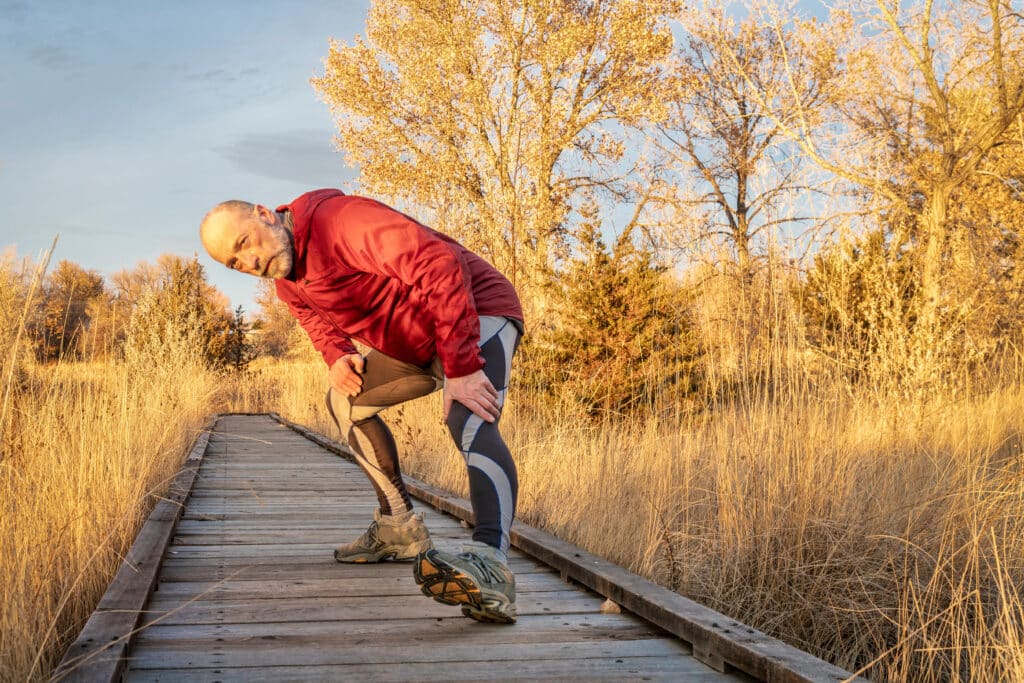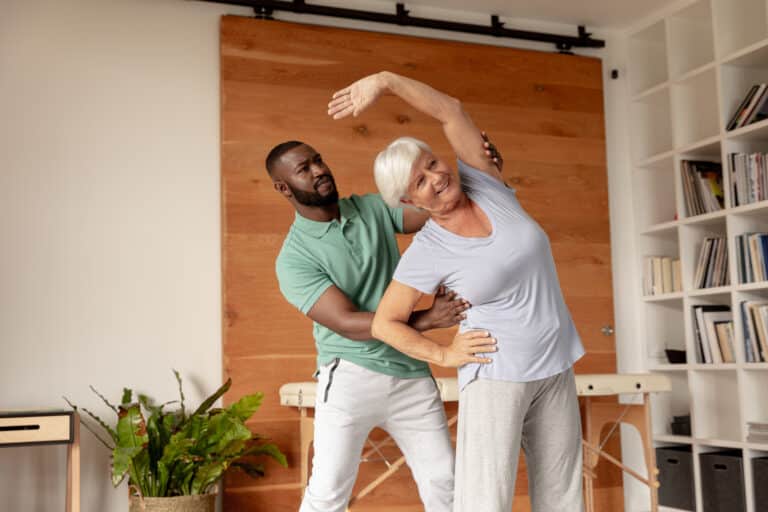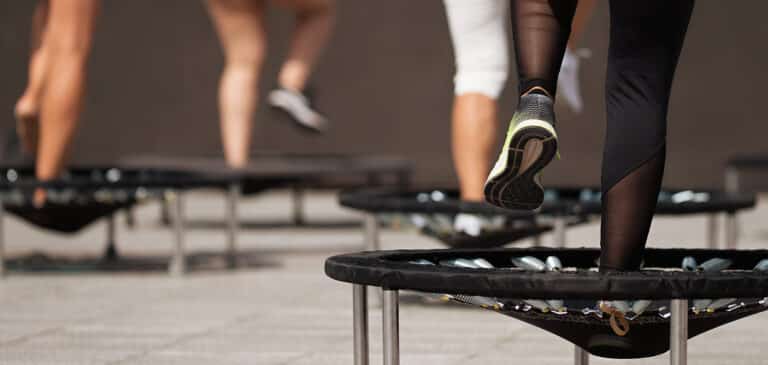Walking is one of the simplest and best forms of healthy exercise, especially for older adults. It’s an easy activity that most people can do, and it has been shown to maintain fitness and overall health. However, as with any other form of exercise, it’s essential to know that walking without proper stretching can lead to injuries and discomfort. The best walking stretches for seniors might be easier than you think!
This article will guide you through the best walking stretches, the importance of stretching, when to incorporate it into your walking routine, and how it can improve your flexibility, range of motion, and performance.
Let’s dive in and discover how a few simple stretches can enhance your walking experience!
Why Stretching is Important for Walking
While strengthening involves the contraction of muscles, stretching does the opposite, lengthening your muscles and tendons and enhancing their elasticity and flexibility. Stretching and strengthening complement each other in most movements throughout the body through a relationship of tension and release.
For example, try squeezing your hand into a tight fist. The muscle tension around the palm, fingers, and wrist creates a fist through a muscular contraction. However, the muscles on the back side of your hand wrist are responding by being stretched at the same time. The health of your muscles, tendons, and joints relies heavily on balancing this flex-and-stretch relationship. This relationship applies to most parts of your body.
Overly tense muscles anywhere in the body can lead to injury or imbalance. Stretching to counter this tension offers numerous benefits, including injury prevention, reduced soreness, improved flexibility, and enhanced performance and posture.
Let’s explore some of the benefits of stretching for walkers.
Benefits of Stretching for Walkers
Injury prevention and reduced soreness
Walking involves repeated muscle contractions, which can cause microscopic tears in the muscle fibers, leading to inflammation and pain.
By incorporating stretching into your warm-up routine before walking, you can condition your muscles and joints, reducing the risk of strains, sprains, and tears. Post-walk stretches effectively cool down, preventing stiffness, inflammation, cramps, and muscle spasms.
Improved flexibility and range of motion
Walking requires specific joint movements to ensure smooth and efficient motion. As we age, joints can become stiff and less flexible due to wear and tear or inactivity.
Regular stretching can enhance joint mobility, particularly in the ankles, knees, hips, and spine. This improvement in flexibility aids in refining your walking technique, posture, and balance.
Additionally, stretching can help alleviate or manage common conditions that affect older adults, such as arthritis, osteoporosis, and sciatica.
Enhanced performance and posture
Stretching improves blood circulation and oxygen delivery to your muscles and organs, increasing energy levels, endurance, and quicker recovery. It also helps rectify muscle imbalances and weaknesses that may contribute to poor posture, such as rounded shoulders or forward head posture.
The benefits of stretching extend beyond physical well-being and can positively impact your mental state by promoting relaxation and stress reduction, boosting overall enjoyment of the walking experience.
When and How to Stretch for Walking
Now that you understand the importance of stretching for walking, it’s crucial to know when and how to incorporate it into your routine.
Before and After Walking
The optimal times to stretch are before and after walking, but in different ways.
Before walking, stretching prepares your muscles and joints for the upcoming activity, reducing the risk of injuries and soreness. After walking, stretching helps relax your muscles and joints, preventing stiffness and pain.
However, it’s important to note that the stretching techniques differ between pre- and post-walk sessions. There are two types of stretches to consider: dynamic and static.
Dynamic Stretches vs. Static Stretches: How to Stretch Safely
Dynamic stretches involve controlled, rhythmic movements that take your joints and muscles through their full range of motion.
These stretches are ideal for your warm-up routine, as they stimulate blood flow, increase heart rate, and elevate body temperature.
On the other hand, static stretches involve holding a position that stretches a specific muscle or group of muscles for a set duration, typically 15 to 30 seconds. These stretches are best performed after your walk, aiding muscle relaxation, reducing tension, and improving flexibility.
An easy way to ensure that you care for your tissues before and after walking or other activities is to budget ten minutes to bookend your session. Start thinking about stretching as an essential part of your workout routine rather than an “add-on” when you have extra time.
Think about your dynamic stretch as an invigorating warm-up. In contrast, your static stretch serves as a refreshing, relaxing cool-down.
A Simple Stretching Routine for Walking

While it might be easy to think about walking as a lower-body exercise, it’s pretty dynamic, working muscles throughout your upper and lower body. Seemingly unrelated stretches, such as thoracic spine mobility exercises, can be surprisingly beneficial for better walking.
For this reason, targeting areas to stretch in both your upper and lower body is optimal.
- Upper Body Stretches include shoulder rolls, arm swings, and neck rotations.
- Lower Body Stretches include ankle circles, calf raises, hamstring stretches, stretches targeting the thighs, and hip flexor stretches.
Before we get into an easy stretching routine to get you started, let’s outline some best practices to keep you safe from the beginning to the end of your workout.
Simple Stretching Guidelines
While stretching is typically a relatively safe activity, poor stretching techniques can lead to muscle tears, joint pain, or diminished performance.
Before we get started, here are some tips and precautions to ensure safe and effective stretching for any activity:
- Warm up before stretching: Before starting your dynamic stretch routine, warm up your body with light cardio activities like brisk walking for 5 to 10 minutes. This helps prevent injuries by encouraging blood flow to your muscles and tissues, enhancing the effectiveness of your stretches.
- Breathe normally and relax: Your breathing is surprisingly important during all parts of your workout, including while stretching. Maintain regular, deep breaths through your nose and mouth. Relax your muscles and try not to hold your breath. This will make your stretching experience more comfortable and safer while keeping a steady oxygen flow into your system.
- Hold each stretch for 15 to 30 seconds: During static stretches, aim to hold each position for at least 15 seconds, extending up to 30 seconds or more if it feels comfortable. Repeat each stretch on each side of your body to increase muscle and tendon length and elasticity.
- Avoid bouncing or overstretching: Steer clear of bouncing or jerking movements during dynamic or static stretches, as this can cause micro-tears in your muscles and tendons. Avoid stretching beyond your normal range of motion or to the point of pain, as this can lead to tissue and nerve damage. Stretch only to the point of mild discomfort or tightness. Your stretch should feel like a “hurt’s so good” sensation rather than pain.
Following these guidelines can safely and effectively incorporate stretching into your walking routine. In the next section, we will explore different stretches and provide valuable tips for maximizing the benefits of stretching.
The Best Stretches for Walking, Step-by-Step
Now that you know how to perform the stretches correctly, let’s look at the step-by-step instructions for each stretch to improve your practice today! You can follow these instructions before and after walking, but remember to do dynamic stretches before walking and static stretches after walking
Here are step-by-step instructions for each stretch:
Dynamic Stretches for BEFORE Your Walk
Shoulder Rolls
- Stand up straight and relax your shoulders.
- Roll your shoulders forward in a circular motion as if you are shrugging them up and then forward, then reaching your shoulders down away from your ears before returning to the start position.
- Perform 10 circles in a forward direction.
- Reverse the movement and roll your shoulders backward for another 10 repetitions.
Arm Swings
- Stand up straight with your feet shoulder-width apart.
- Swing your right arm across your chest, reaching towards the opposite shoulder.
- Hold your right arm with your left hand and gently pull it towards your body until you feel a stretch in your right shoulder and arm.
- Hold the stretch for 15 to 30 seconds.
- Release and switch sides, swinging your left arm across your chest.
- Repeat the stretch 2 to 3 times on each side.
Neck Rotations
- Sit or stand up straight with your feet shoulder-width apart.
- Rotate your head to the right, until you feel a gentle stretch.
- Slowly rotate your head back to the center, then to the left.
- Return to the starting position.
- Repeat this rotation 10 times in each direction.
Ankle Circles
- This exercise can be done with both feet at once or one foot at a time
- Sit on a bed or couch with one or both legs extended and your spin upright.
- Point one or both feet, then flex both feet until you feel slight tension in each position. Your leg should remain straight if possible.
- One repetition means pointing and flexing one time each. Aim for ten repetitions.
- Perform 2 to 3 sets of ten repetitions on each foot.
Calf Raises
- Stand up straight with your feet hip-width apart and your hands on your hips.
- Slowly rise onto the balls of your feet, lifting your heels off the ground.
- Hold the raised position for a few seconds, feeling the engagement in your calves.
- Lower your heels back down to the ground.
- Repeat this movement 10 to 15 times.
Static Stretches for AFTER Your Walk
Hamstring Stretch
- Stand up straight with your feet hip-width apart and your hands on your hips, then step forward with your right foot and slightly bend your right knee, drawing your toes toward your shin.
- Keep your left leg straight and your left heel on the ground.
- Lean forward from your hips, reaching for your right shin or ankle—this is a “touch your toes” movement, but you don’t need to touch your toes to get the benefit. You should feel a moderate to intense stretch in the back of your right leg.
- Hold the stretch for 15 to 30 seconds, switch legs, and repeat on your left side.
Quadriceps Stretch
- Place one knee on a sturdy padded chair seat and step the other foot slightly forward.
- Bend your standing leg and lean forward until you feel a stretch in the opposite thigh. To be clear, this stretch targets the leg on the chair with the standing leg for support.
- Hold the stretch for 15 to 30 seconds.
- Switch legs and repeat on your other side.
- Perform 2 to 3 sets on each leg.
Kneeling Hip Flexor Stretch
- Kneel with your right knee on the ground. Use a cushion if needed.
- Push your hips forward until you feel a stretch in the front of your right hip.
- Hold the stretch for 15 to 30 seconds.
- Switch sides and repeat the stretch on your left side.
How to Incorporate Stretching into Your Walking Routine
In order to make the most of your stretching routine, it’s essential to consider when and how long you stretch. Although it might not seem like a big difference, dynamic stretches bring warmth and blood flow to your tissues, which makes them ideal for before your workout.
Static stretches tend to have a more dramatic influence on the length of your muscle tissues. Overstretching before a walk or any other workout can increase the chances of injury. For this reason, it’s best to do these longer hold stretches after your workout to help them return to their pre-workout length.
Aim to stretch before and after walking at least 2 to 3 times weekly. The frequency and duration of your stretching routine may vary based on age, fitness level, health condition, and walking goals. Listen to your body and consult your doctor or physical therapist for specific recommendations if you feel any discomfort or you feel like you need some guidance.
Customize your stretching routine based on your goals and needs
- Tailor your stretching routine to your preferences and objectives.
- Focus on stretches that target areas of your body that you want to improve or prevent problems.
- Explore different stretches and consider using tools or props to assist you.
- Seek guidance from your doctor or physical therapist to customize your routine.
Track your progress and adjust your stretching routine
- Keep track of your progress and adapt your stretching routine as you improve.
- Use measurements or indicators of flexibility and mobility, such as a tape measure, stopwatch, or scale.
- Record these measurements in a journal or app and compare them over time.
- Aim for gradual improvement and avoid comparing yourself to others or setting unrealistic goals.
- Celebrate your achievements and reward yourself for reaching milestones.
Key Takeaways
In this article, we’ve covered the best stretches for walking and provided step-by-step instructions for each stretch. Incorporating these stretches into your routine can enhance your walking experience and improve your flexibility, range of motion, and overall well-being.
Remember to warm up before stretching, breathe properly, hold each stretch for the recommended duration, avoid bouncing or overstretching, and repeat stretches multiple times.
Personalize your stretching routine based on your goals and track your progress. Now, put on your walking shoes and enjoy the benefits of stretching as you embark on your walking journey to better health!
FAQs
What specific stretches should I avoid if I have certain joint or muscle issues?
The stretches you should avoid can be specific to your condition. For example, people with knee issues may want to avoid deep squats or lunges. Those with shoulder problems may need to avoid overhead stretches. In general, avoid any stretch that causes pain. Stretching should feel slightly uncomfortable due to the tension, but it should not hurt. If you have a specific joint or muscle issue, it’s always best to consult a healthcare provider or a physical therapist.
Can I replace walking with another exercise if I’m unable to walk due to an injury and still follow the stretching routine?
Yes, walking can be replaced with other low-impact exercises like cycling, swimming, or chair exercises. The key is maintaining a routine that keeps your body moving, helping to maintain flexibility. If the stretches in your routine are not specific to walking and do not exacerbate your injury, you should be able to continue them.
How can I tell if I’m over-stretching or not stretching enough during my walking routine?
Pay attention to how your body feels. Stretching should cause a slight discomfort due to tension in the muscle, but not pain. If you feel pain during or after stretching, you’re likely over-stretching. On the other hand, if you don’t feel any tension during a stretch, you might not be stretching enough. Remember, flexibility improves over time, so don’t rush it.
How can stretching impact my walking speed or efficiency? Is there a way to target stretches to improve these areas specifically?
Stretching can increase your flexibility, which can improve your stride and walking efficiency. This might indirectly increase your speed. Stretches that target the lower body – including the hip flexors, hamstrings, and calf muscles – can be especially beneficial for walking. Stretches like the ones listed in this article are especially helpful.
If I have a medical condition like arthritis or osteoporosis, should I consult with a healthcare provider before attempting these stretches?
It’s always a good idea to consult a healthcare provider before starting a new exercise routine, particularly if you have a chronic condition like arthritis or osteoporosis. While exercise, including stretching, is generally beneficial for these conditions, some modifications may be necessary to ensure safety. A healthcare provider or physical therapist can provide guidance on what types of stretches are appropriate for your specific situation.
References
- Bennett, J. A. (2011). Motivating older adults to exercise: What works? Age and Ageing, 40(2), 148-149. https://doi.org/10.1093/ageing/afq182
- Izquierdo, M., Merchant, R.A., Morley, J.E. et al. International Exercise Recommendations in Older Adults (ICFSR): Expert Consensus Guidelines. J Nutr Health Aging 25, 824–853 (2021). https://doi.org/10.1007/s12603-021-1665-8






